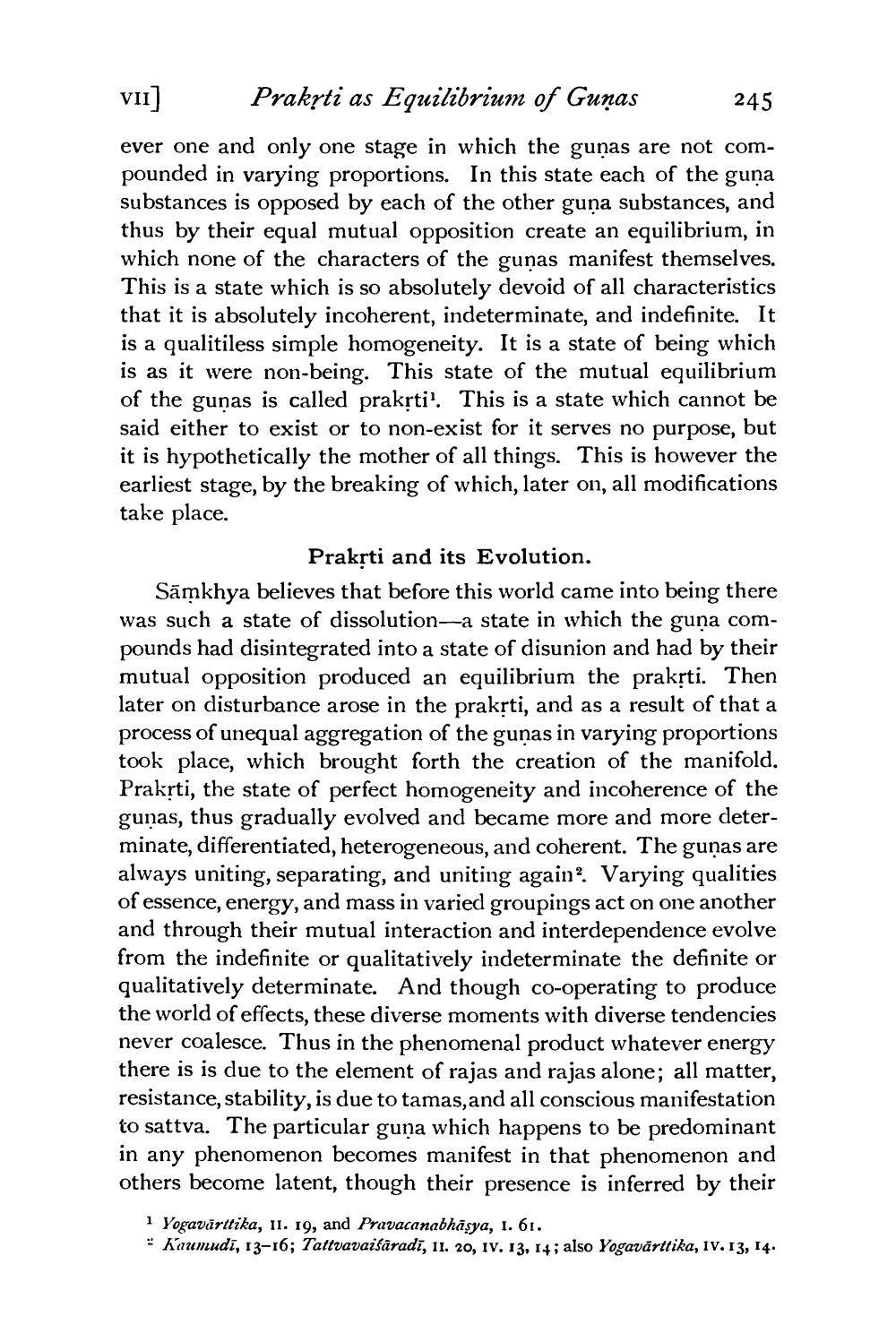________________
vii] Prakrti as Equilibrium of Gunas 245 ever one and only one stage in which the gunas are not compounded in varying proportions. In this state each of the guna substances is opposed by each of the other guna substances, and thus by their equal mutual opposition create an equilibrium, in which none of the characters of the gunas manifest themselves. This is a state which is so absolutely devoid of all characteristics that it is absolutely incoherent, indeterminate, and indefinite. It is a qualitiless simple homogeneity. It is a state of being which is as it were non-being. This state of the mutual equilibrium of the guņas is called prakrti'. This is a state which cannot be said either to exist or to non-exist for it serves no purpose, but it is hypothetically the mother of all things. This is however the earliest stage, by the breaking of which, later on, all modifications take place.
Prakrti and its Evolution. Sāmkhya believes that before this world came into being there was such a state of dissolution-a state in which the guna compounds had disintegrated into a state of disunion and had by their mutual opposition produced an equilibrium the prakrti. Then later on disturbance arose in the prakrti, and as a result of that a process of unequal aggregation of the gunas in varying proportions took place, which brought forth the creation of the manifold. Prakrti, the state of perfect homogeneity and incoherence of the gunas, thus gradually evolved and became more and more determinate, differentiated, heterogeneous, and coherent. The guņas are always uniting, separating, and uniting again? Varying qualities of essence, energy, and mass in varied groupings act on one another and through their mutual interaction and interdependence evolve from the indefinite or qualitatively indeterminate the definite or qualitatively determinate. And though co-operating to produce the world of effects, these diverse moments with diverse tendencies never coalesce. Thus in the phenomenal product whatever energy there is is due to the element of rajas and rajas alone; all matter, resistance, stability, is due to tamas,and all conscious manifestation to sattva. The particular guna which happens to be predominant in any phenomenon becomes manifest in that phenomenon and others become latent, though their presence is inferred by their
1 Yogavürttika, 11. 19, and Pravacanabhäsya, 1. 61.
Kaumudi, 13-16; Tattvavaisāradi, 11. 20, IV. 13, 14; also Yogavärttika, IV. 13, 14.




